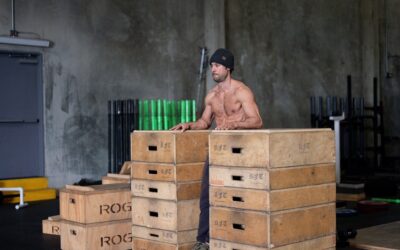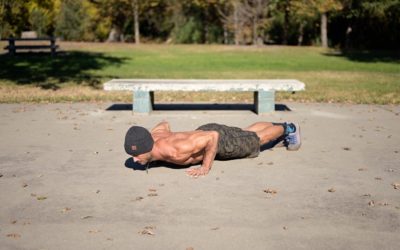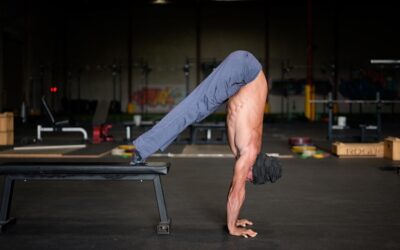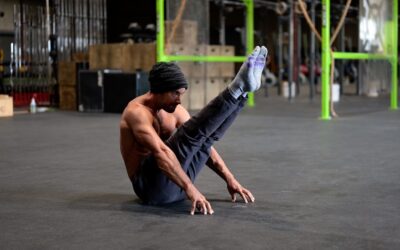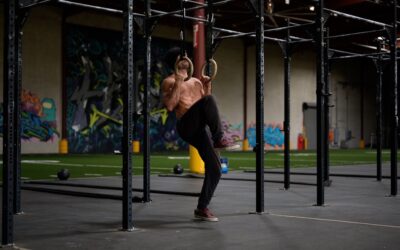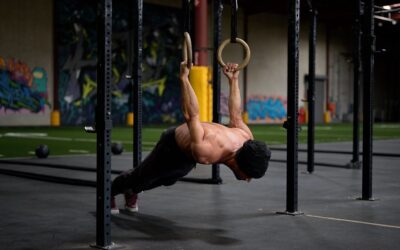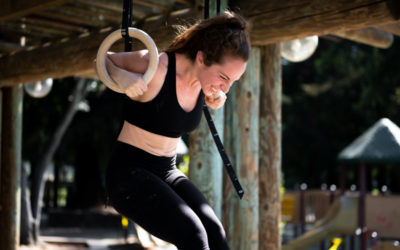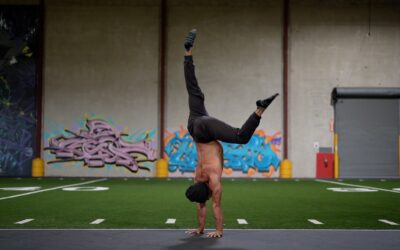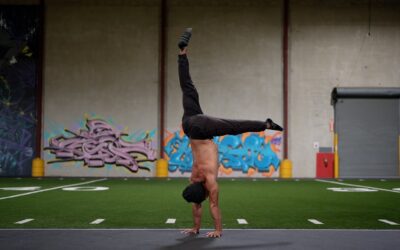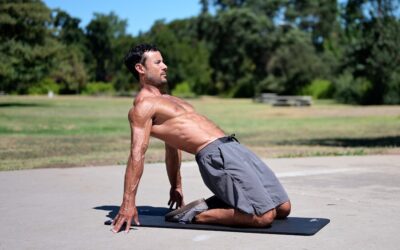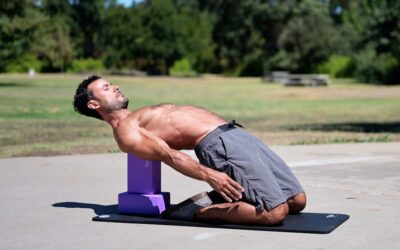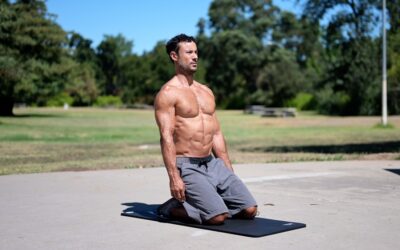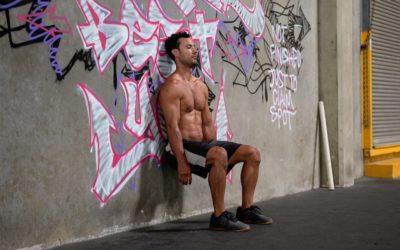Gymnastics and Bodyweight Demos
Russian Dip – Transition
The russian dip is an exercise to strengthen internal rotation of the shoulders. It directly translates to the turnover in the muscle up, which is a common exercise in CrossFit training.Cues: Support on forearms to begin and push tall Rock back slightly then rock...
Push-up
How you do a push-up is a good measure of how you approach your training in general. A full range of motion push-up with quality is not an easy exercise for most and should be a staple in any training program, or warm-up for more advanced athletes.Cues: Start in a...
Tuck Front Lever – Knees Under Bar
Cues: Hold the body level with the knees lower than bar Squeeze the scaps into retraction and keep the arms straight Push back away from the bar to engage the lats Mistakes: Bending elbows Allowing scaps to relax Hanging straight down without pushing back
Zombie Slide on Bench
The zombie slide teaches a strong push through the shoulders to effectively develop the strength to support the body in a press to handstand. Using a bench to elevated the feet reduces the mobility requirement and makes it easier to get into the proper pike...
Ball Up + Negative
Cues: Tuck the knees into the chest and curl up until the feet contact the pull-up bar Squeeze the scaps into retraction and keep the arms straight You can use momentum to get into position Negative down as slowly as possible Mistakes: Bending elbows Allowing scaps to...
Seated Pike Compression + Finger Walk Down
Creating a tight pike while leaning back enables a greater degree of compression compared to a lift directly from the floor with the chest forward. By starting with tighter compression and lowering into our best position with control you can build a greater degree of...
Skin the Cat – Floor Entry
CUES: Cling to a shoulders to ring hold and raise the knees with control In a tight tuck lean back and slowly straighten the arms to flip the body over With straight legs and straight arms slowly receive the floor with your feet Lower into your deepest shoulder...
Skin the Cat – Step in From Floor
CUES: Set the rings to shoulder height to begin Cling to the rings and step one leg at a time to tuck position Raise the other leg and lean back to allow the body to flip backwards Slowly straighten the arms as you lean back with control and focus Reach with the legs...
Shoulder Extension Scap Pull
CUES: Grip the rings and bring them behind you in a kneeling position Work between a relaxed and strongly active protracted shoulder position Use kneeling, knees up, straight body based upon your skill level Easiest is always best for this drill until it is perfected...
Ring Dip – Feet Support on Box
Cues: Place your tip toes on a box to allow for quality positions Acquire ring support position to begin Lower into a deep dip and return to a full lockout at the top Bend the knees to keep the torso vertical Turnout should happen on each rep Mistakes: Keeping the...
Handstand – Single Leg Circles
Cues: Secure handstand balance first Bring one knee down to the deepest tuck you can, straddle to the side, return to legs together, straddle to the side, bring leg into tuck, then return to straddle Keep tall leg in alignment Push tall and keep shoulders stacked...
Handstand – Single Leg Tuck
Cues: Secure handstand balance first Bring one knee down to the deepest tuck you can Keep tall leg in alignment Push tall and keep shoulders stacked over hands Keep toes pointed at all times Mistakes: Shoulders sinking down or planching forward Reaching out of...
Handstand – Straight Leg Isolations
Cues: Secure handstand balance first Bring one leg down to level with the hips then return to straight Keep tall leg in alignment Push tall and keep shoulders stacked over hands Maintain locked knees and actively pointed toes throughout the set Mistakes: Shoulders...
Ring Row
Cues: Adjust rings so your pulling angle is perpendicular to the strap angle Squeeze the scaps together first and then pull the rings deep to the armpits Work with the mentality that you can always get a little bit more scap retraction Use an angle that allows for a...
Active Arch Hang
Cues: Pull with 100% straight arms by retracting and depressing the scaps The goal is to pull the chest to horizontal and maximize scap retraction Allow the legs to relax and hang straight down Minimize lat assistance and focus on scaps Pull only to the height you are...
Human Knee Extension – Hand Assisted Negative
The hand assisted human knee extension is a scaled version that allows you to approach your best range of motion using the power of negatives. By working only the negative with high quality you will build the strength towards completing this movement with...
Human Knee Extension – Target
The human knee extension to target is a scaled version that allows you to precisely coordinate your range of motion and slowly increase it towards the full range over time. Working in your best range of motion will build strength in the knees and quads effectively...
Kneeling Squat
The kneeling squat is a conditioning exercise for the quads and particularly the knees. It can be scaled, or advanced, in order to fit almost any skill level.Cues: Keep the torso vertical both down and coming back up Scale as needed to prevent pain Scale: 1 -...
Ring Pull-up – Single Ring Negative
A scaled version of the single ring pull-up. This teaches the ability to maintain tension throughout the range of motion. The isometric contractions will build functional strength that can be applied effectively to other pulling exercises over time.Cues: Start with a...
Wall Sit – Single Leg
The single leg wall sit is significantly more challenging the the double leg version. It requires more hip strength to stabilize the unilateral position and the knee extensors of one side must support the full load of your bodyweight. Cues: Position yourself so your...
Wall Sit
The wall sit is used to develop strength in the legs while placing less stress on the joints than movements requiring reps, like squats and lunges. It is effective for building endurance in the knee extensors as well. Cues: Position yourself so your knees and hips are...
